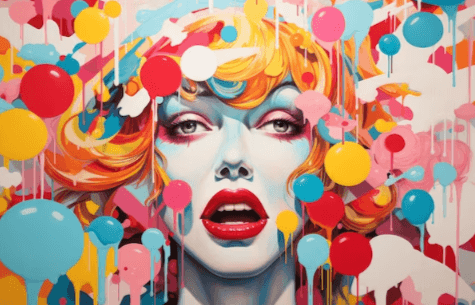Modern:1q_X-U8dhgi= Pop Art

Modern:1q_X-U8dhgi= Pop Art serves as a compelling lens through which to examine the intersection of culture, commerce, and creativity. Emerging from the vibrant critique of consumer society, this movement has evolved significantly, drawing on both traditional artistic techniques and contemporary digital platforms. While figures like Andy Warhol and Roy Lichtenstein established a foundation that challenged conventional aesthetics, the question remains: how will the next generation of artists navigate these complexities? As we explore the influences and future trajectories of this genre, intriguing possibilities arise that merit further consideration.
Overview of Modern Pop Art
As contemporary society continues to grapple with the complexities of consumer culture, modern pop art emerges as a compelling reflection of these dynamics, illustrating the intricate interplay between art and everyday life.
This movement serves as a rich cultural commentary, utilizing visual aesthetics to challenge societal norms and perceptions.
Influences on the Movement
The evolution of modern pop art cannot be fully understood without acknowledging the diverse influences that shaped its emergence.
This movement drew from the cultural impact of mass media representation, utilizing artistic techniques that emphasized commercial appeal.
Additionally, pop art served as a platform for political commentary, transforming visual language into a powerful tool for social critique and reflection on contemporary society’s complexities.
Prominent Artists and Works
Creativity and innovation are hallmarks of the pop art movement, exemplified by the contributions of several key artists whose works defined and propelled the genre.
Warhol’s legacy endures through his iconic silkscreens, challenging consumer culture, while Lichtenstein’s techniques, inspired by comic strips, revolutionized fine art’s relationship with popular media.
Together, they illustrate pop art’s profound impact on artistic expression and cultural commentary.
Read Also Modern:4-Liaklihrw= Beach Houses

The Future of Pop Art
Pop art’s evolution has always mirrored societal shifts, reflecting changes in technology, culture, and consumerism.
The future of pop art lies in its embrace of digital transformation and social media, facilitating innovative artistic collaboration and global perspectives.
As multimedia integration fosters interactive experiences, pop art will continue to serve as a powerful cultural commentary, offering a critique of consumerism while resonating with an increasingly liberated audience.
Conclusion
In the ongoing dialogue between art and commerce, Modern:1q_X-U8dhgi= Pop Art emerges as a compelling lens through which to examine contemporary culture. Like a mirror reflecting society’s preoccupations, this movement not only critiques consumerism but also invites a re-evaluation of value and meaning in an increasingly digitized world. As new technologies continue to shape artistic expression, the evolution of Pop Art promises to challenge perceptions and inspire future generations, much like the vibrant canvases of Warhol and Lichtenstein did decades ago.




